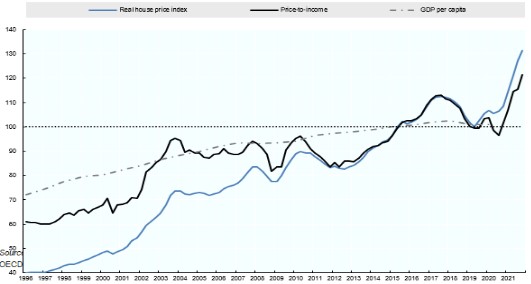by Robert Hamilton
Zinberg’s three determinants of illicit drug use are drug, set, and setting. In 1972 Norman. E. Zinberg, M.D. brought these three essential criteria, in his view, for the effective study of illicit drug use to the world’s attention for the first time (Weil 1972); (Zinberg & Robertson 1972); (Zinberg, Rarding & Winkeller 1981). Previously, research into the use of illicit drugs had been predominantly focused on the pharmacological make-up and effect of the drug itself, usually in a clinical setting (Moore:1993:413). Zinberg in his aptly titled book, Drug, Set and Setting- The Basis for Controlled Intoxicant Use, proposed that, to understand what led someone to take an illicit drug, it was important to widen the focus of research into drug taking, to include the person’s state of mind in relation to drug taking, and also the real setting in which this activity was taking place.
Continued in Drugs Dreams and Consciousness by Robert and Sudha Hamilton

[1] Harding, Wayne M.; Zinberg, Norman E. “The effectiveness of the subculture in developing rituals and social sanctions for controlled drug use” in Drugs, Rituals and Altered States of Consciousness , Du Toit, Brian M. , 1977. P – 123.
“Subjects are adamant about using psychedelics in a proper setting – a good place. For many this means tripping in a relatively secluded spot in the country What seems important, however, is that the space is secure and comfortable. A city tripper said, “I’ll take a walk outside but it’ll always be with the notion that I can come back to this kind of sanctuary for myself in the house, and so it’s no threat .. ” This subject and many others expressed surprise and some disdain for users who violated the principle that psychedelic use is a taxing experience that should be confined to special settings:”
[2] Burr, Angela. “Chasing the dragon” British Journal of Criminology , 27:4 , 1987 , 339.
“The “skag n subculture
Activities associated with using heroin brought large numbers of youngsters, with shared aims, in North Southwark into contact with one another. Heroin users frequently commented that they knew “500 other
skagheads.” By 1984, as will be described in detail in a forthcoming paper, so extensively and rapidly had “Chasing the Dragon” spread, that a highly developed heroin or “skag” subculture, with its own separate, complexly intertwined, internal social organisation had evolved around “nicking,” “scoring” and “serving.” As with previous delinquent behaviour, these activities enabled addicts to express and validate friendships. Most
importantly they superseded all other forms of delinquency. Big habits, successful thieving, the ability to obtain heroin and connections with well-known addicts and criminals became the main focus for competition
for status, prestige and power within the skag subculture and a means of obtaining peer group conformity. “1 had to get the skag,” said Dave, “me mates were too fucking cowards to get it themselves.” “
[3]Burr, Angela. “Chasing the dragon” British Journal of Criminology , 27:4 , 1987 , 334.
“However, receptivity and attitudes to taking heroin, patterns of recruitment, method and length of use, as well as the types of crimes committed to finance its usage, the economic and criminal organisation associated with it and the related opiate subculture, arc all to some extent determined by, and expressive of, the social and cultural milieu in which they take place (Burr, 1983a, 1983b, 1984, 1985; Prebble and Casey, 1969; Keiser, 1969; and Weppner et aL., 1977).”
BIBLIOGRAPHY
Agar, Michael H. “Into the whole ritual thing: Ritualistic drug use among urban American heroin addicts” in Drugs, Rituals and Altered States of Consciousness , Du Toit, Brian M. , 1977.
Burr, Angela. “Chasing the dragon” British Journal of Criminology , 27:4 , 1987.
Carpenter, Lucas. “Enhancing the possibilities of desire: Addiction as postmodern trope” Southern Humanities Review , 35:3 , 2001.
Davenport-Hines, Richard Peter Treadwell. “Prologue” in Pursuit of Oblivion: A Global History of Narcotics , Davenport-Hines, Richard Peter Treadwell , 2004.
Gerber, Rudolph J. “History of demonizing drugs” in Legalizing Marijuana: Drug Policy Reform and Prohibition Politics , Gerber, Rudolph J. , 2004.
Grund, Jean-Paul G.; Kaplan, Charles D.; De Vries, Marten. “Rituals of regulation: Controlled and uncontrolled drug use in natural settings” in Psychoactive Drugs and Harm Reduction: From Faith to Science , Heather, Nick; Wodak, Alex; Nadelmann, Ethan A.; O’Hare, Pat , 1993.
Hall, Wayne; Pacula, Rosalie Liccardo. “Policy alternatives (part 1 of 2)” in Cannabis Use and Dependence: Public Health and Public Policy , Hall, Wayne; Pacula, Rosalie Liccardo , 2003.
Harding, Wayne M.; Zinberg, Norman E. “The effectiveness of the subculture in developing rituals and social sanctions for controlled drug use” in Drugs, Rituals and Altered States of Consciousness , Du Toit, Brian M. , 1977.
Himmelstein, Jerome L. “From killer weed to drop-out drug: The changing ideology of Marihuana”Contemporary Crises: Crime, Law, Social Policy , 7:1 , 1983.
Hoffmann, John P. “The historical shift in the perception of opiates: from medicine to social menace” Journal of Psychoactive Drugs , 22:1 , 1990.
Krivanek, Jara. “Drug misuse, psychological dependence and addiction” in Understanding Drug Use: The Key Issues , Krivanek, Jara , 2000.
Manderson, Desmond. “Metamorphoses: Clashing symbols in the social construction of drugs” Journal of Drug Issues , 25:4 , 1995.
Montagne, Michael. “The metaphorical nature of drugs and drug taking” Social Science and Medicine , 26:4 , 1988.
Moore, David. “Beyond Zinberg’s ‘social setting’: A processural view of illicit drug use” Drug and Alcohol Review , 12:4 , 1993.
Robson, Philip. “The consequences of drug use” in Forbidden Drugs: Understanding Drugs and Why People Take Them , Robson, Philip , 1994.
Weimer, Daniel. “Drugs-as-a-Disease: heroin, metaphors, and identity in Nixon’s drug war” Janus Head , 6:2 , 2003.












Average Rating